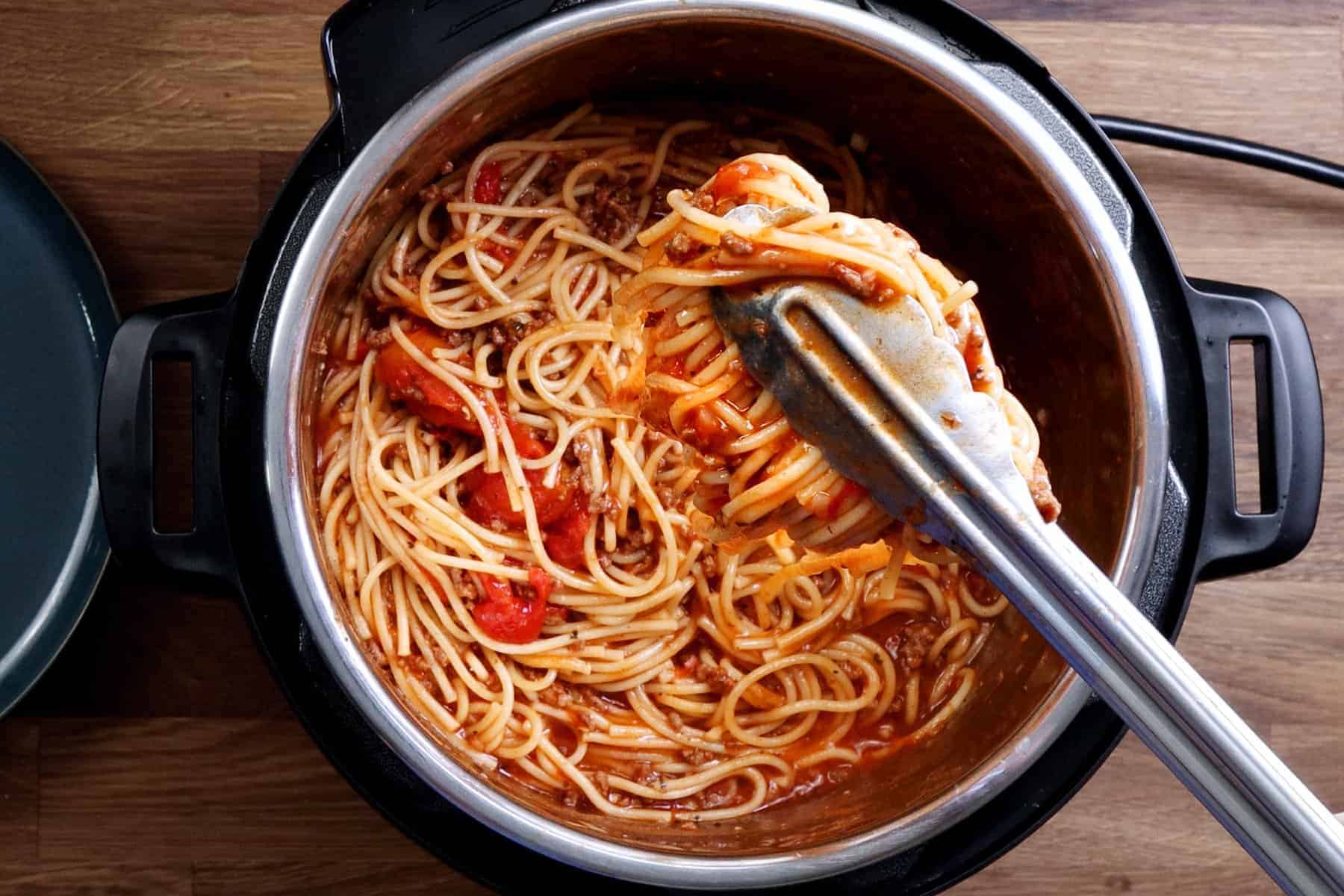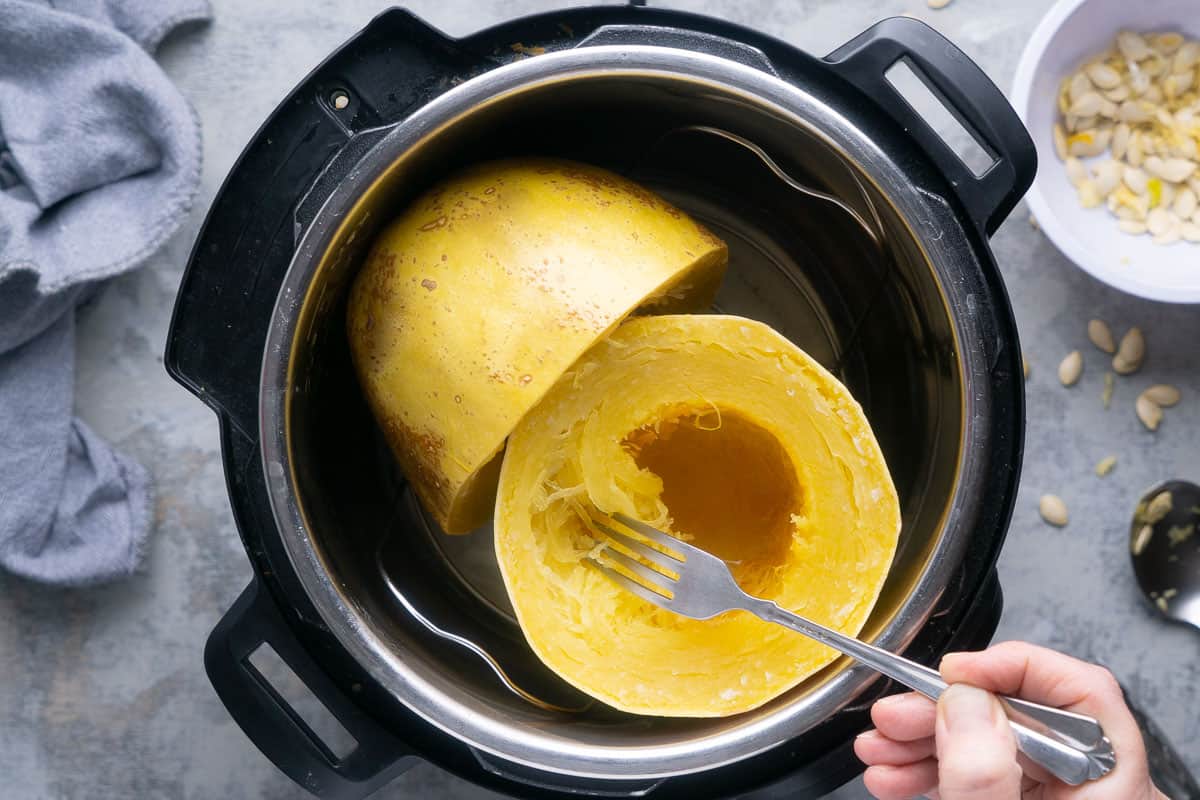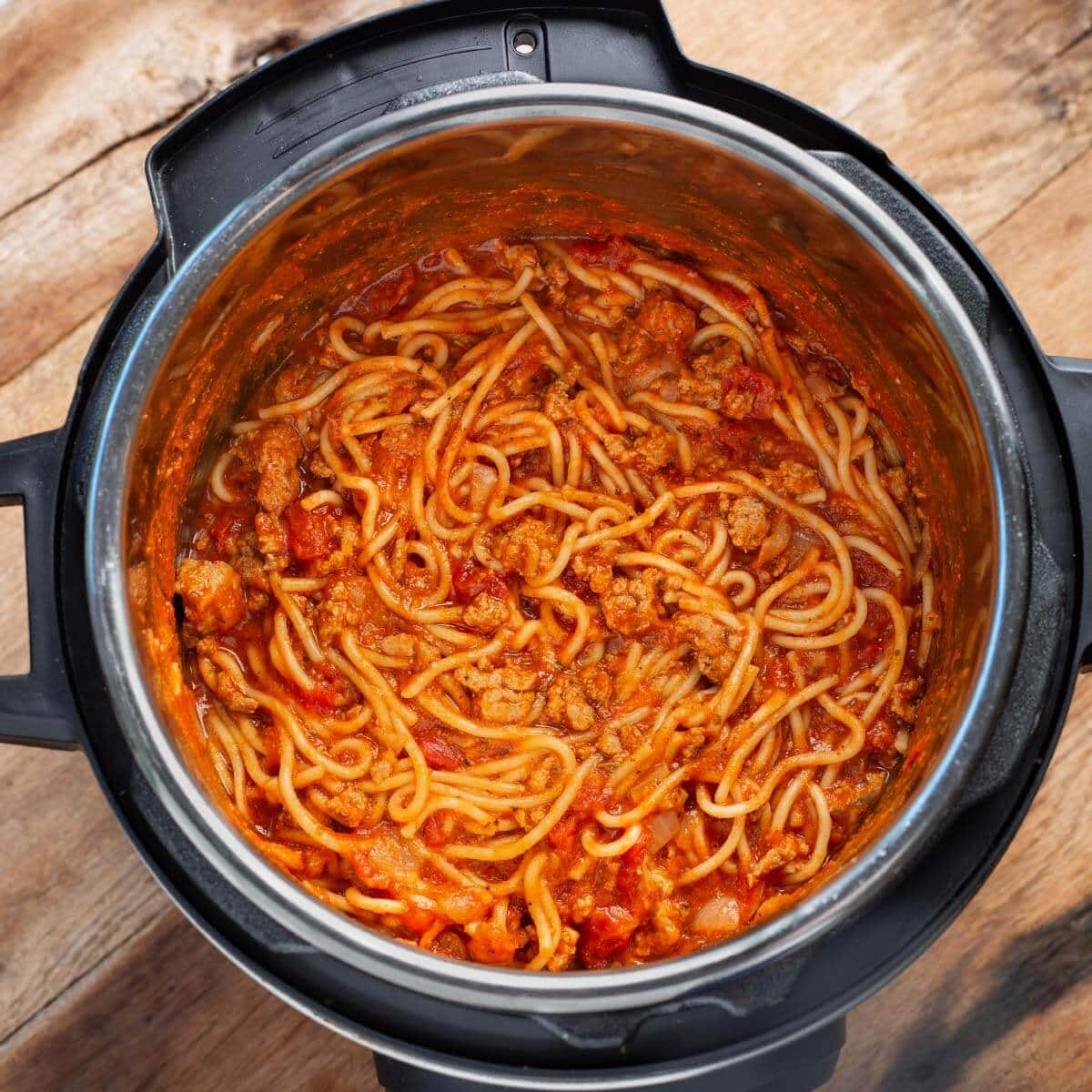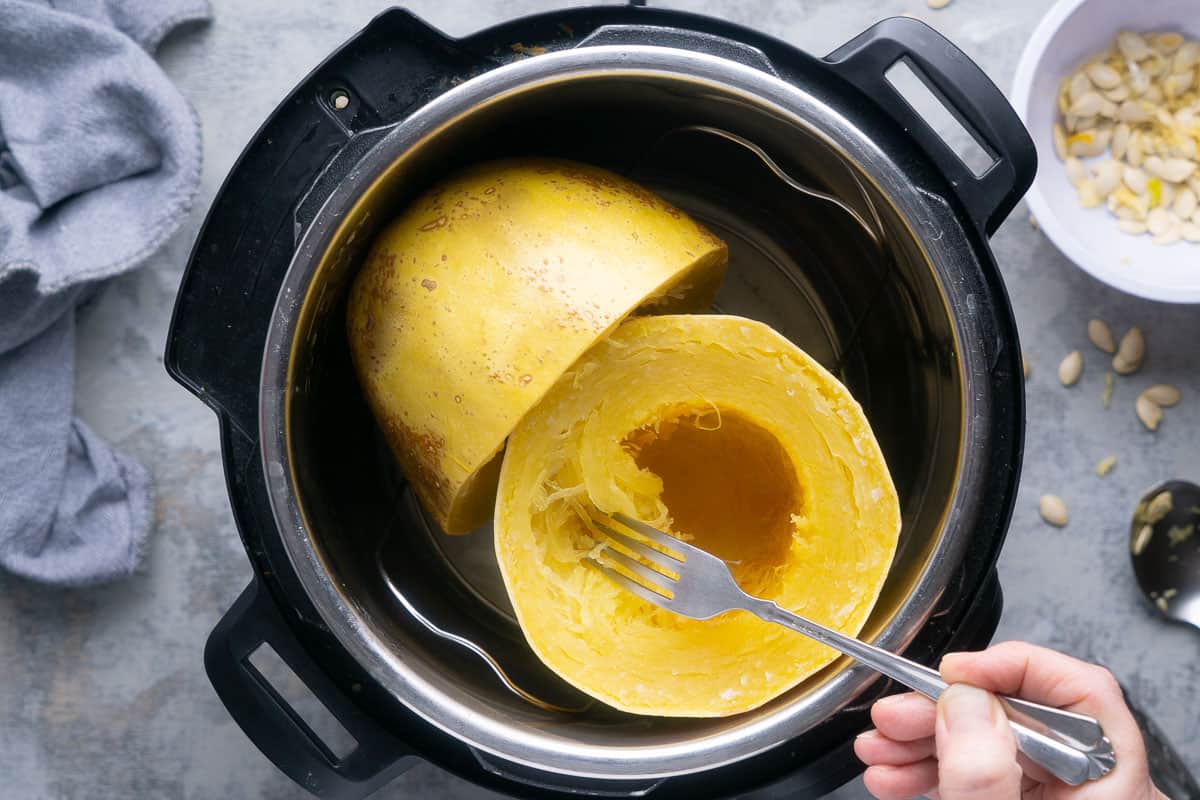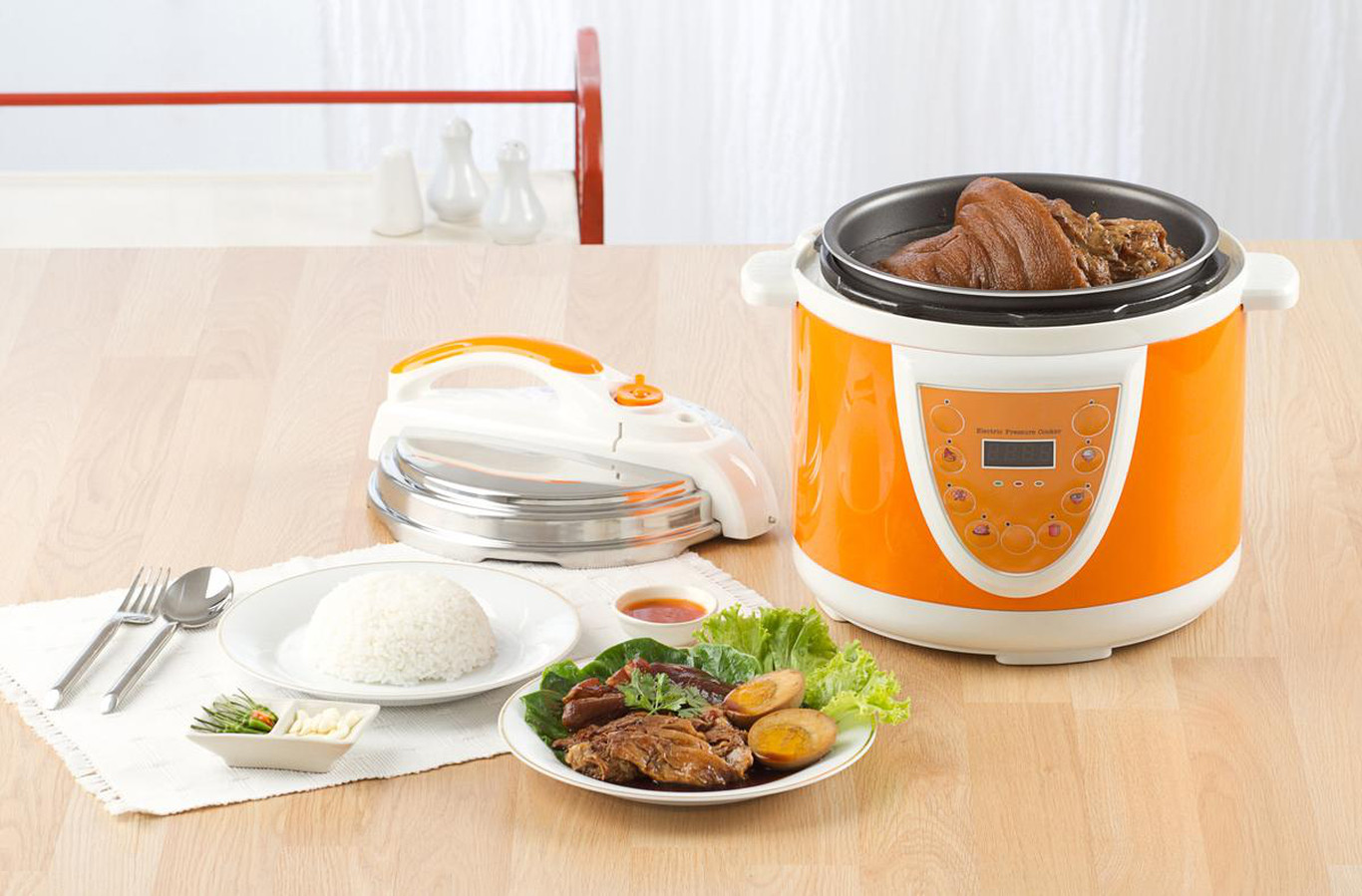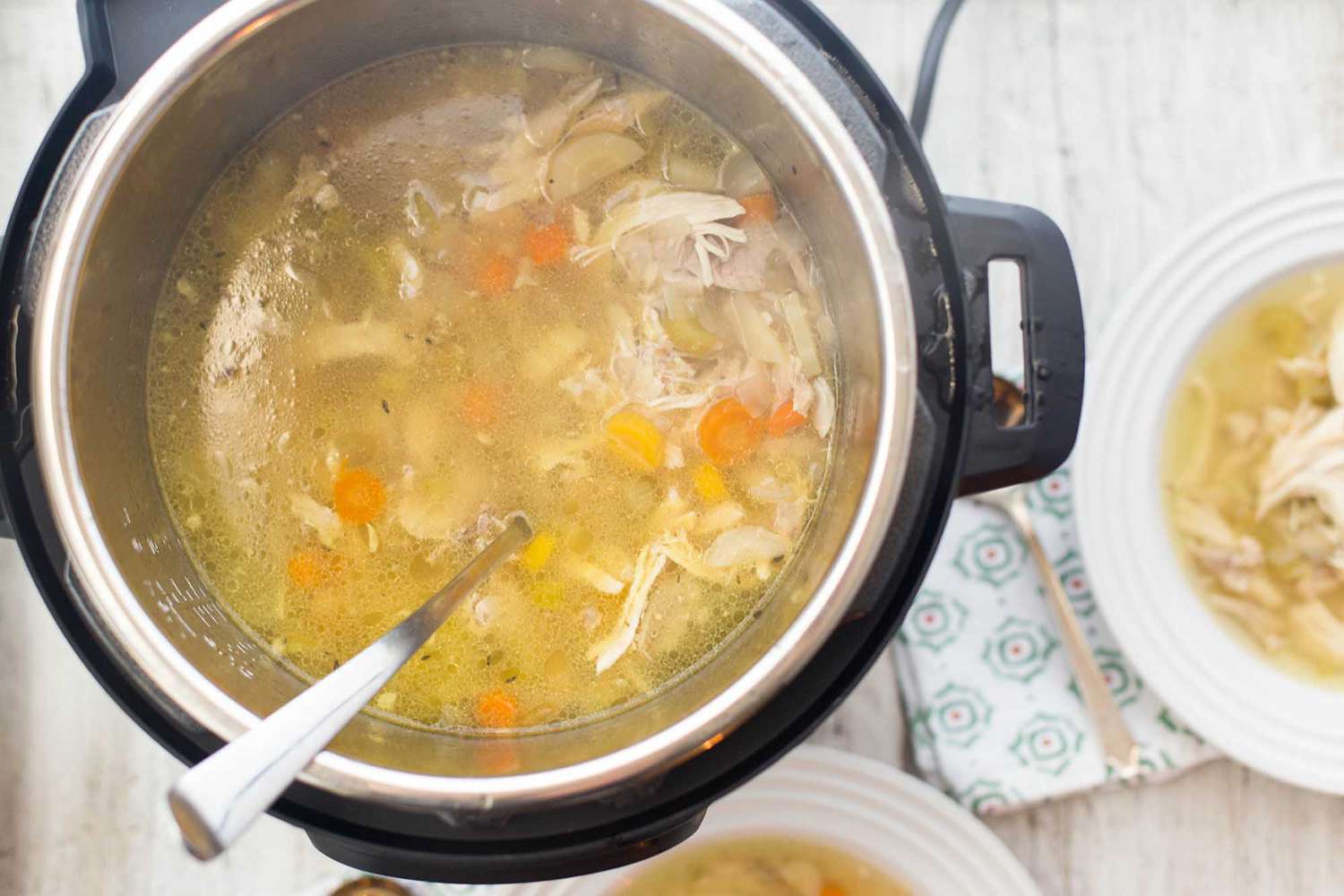Introduction
Welcome to the savory world of cooking spaghetti in an electric pressure cooker! This quick and convenient cooking method allows you to enjoy a delicious plate of perfectly cooked spaghetti in no time. Whether you’re a newbie in the kitchen or a seasoned cook looking for a time-saving recipe, this guide will take you through the step-by-step process of preparing spaghetti in an electric pressure cooker.
Using an electric pressure cooker not only reduces the cooking time but also ensures that the pasta is cooked evenly and absorbs all the flavors of the sauce. No more waiting for a large pot of water to boil or dealing with the hassle of draining the pasta. With this method, you can achieve perfectly al dente spaghetti with minimal effort.
One of the great advantages of using an electric pressure cooker is its versatility. Apart from cooking spaghetti, you can also experiment with different ingredients and sauces to create your own unique pasta dishes. Whether you prefer a classic marinara sauce, a creamy Alfredo, or a spicy arrabbiata, the electric pressure cooker can handle it all.
In this guide, we will walk you through each step, from preparing the ingredients to pressure cooking the spaghetti. We will also provide tips and tricks to ensure that your spaghetti turns out delicious every time. So, grab your electric pressure cooker and let’s get cooking!
Ingredients
Before you start cooking spaghetti in an electric pressure cooker, make sure you have the following ingredients on hand:
1. Spaghetti noodles: Use your preferred type of spaghetti noodles, whether it’s traditional, whole wheat, or gluten-free.
2. Ground beef: For a classic spaghetti bolognese, you’ll need lean ground beef as the base of your sauce.
3. Onion and garlic: These aromatic ingredients add depth and flavor to the sauce.
4. Tomato sauce: Choose a good-quality tomato sauce or passata to create the base for your spaghetti sauce.
5. Dried herbs and spices: Enhance the flavor of your sauce with dried oregano, basil, and a pinch of red pepper flakes for some heat.
6. Salt and pepper: Season your sauce to taste with salt and pepper.
7. Olive oil: Use olive oil for sautéing the onions and garlic.
8. Water or broth: You’ll need some liquid to cook the spaghetti noodles in the electric pressure cooker. You can use water or vegetable broth for added flavor.
9. Parmesan cheese: Grate some parmesan cheese on top of the finished dish for an extra burst of flavor.
10. Fresh herbs (optional): If you have fresh basil or parsley on hand, chop some up and sprinkle it on your spaghetti for a vibrant touch.
Feel free to customize your ingredients based on your preference. You can add vegetables like bell peppers, mushrooms, or olives to the sauce for added texture and flavor. Additionally, if you prefer a vegetarian or vegan option, you can substitute the ground beef with plant-based protein or use lentils instead.
Now that you have gathered all the necessary ingredients, let’s move on to the next step: preparing the ingredients for cooking!
Step 1: Prepare the Ingredients
Before diving into the cooking process, it’s important to properly prepare all the ingredients for your spaghetti in an electric pressure cooker. Follow these simple steps:
1. Start by gathering all the ingredients listed in the recipe. Check if you have everything on hand, and if not, make a quick trip to the grocery store if needed.
2. Next, measure out the required amount of spaghetti noodles based on the serving size you prefer. A usual serving is about 2 ounces (56 grams) of dried spaghetti per person.
3. Peel and chop the onion and garlic cloves. You can dice them finely for a more subtle flavor or keep them slightly larger if you prefer a stronger taste.
4. If you’re using ground beef, have it ready by defrosting if needed and separating it into smaller chunks for easier cooking.
5. If you’re adding any additional vegetables, make sure to wash them and chop them into the desired size.
6. Grate the parmesan cheese, if using, and set it aside for later use as a garnish.
7. Lastly, gather all the seasonings, herbs, and spices required in the recipe and have them measured out and ready to go.
By preparing all the ingredients beforehand, you can streamline the cooking process and ensure that you have everything within arm’s reach when needed. This prevents any last-minute scrambling and allows you to focus on the cooking process itself.
Once you have everything prepared, it’s time to move on to the next step: sautéing the garlic and onion.
Step 2: Sauté the Garlic and Onion
Sautéing the garlic and onion is a crucial step in building the flavor foundation for your spaghetti sauce. Follow these steps to achieve deliciously aromatic results:
1. Start by setting your electric pressure cooker to the sauté function and adjust the heat to medium or high. This will allow you to cook the garlic and onion until they turn fragrant and golden brown.
2. Add a drizzle of olive oil to the inner pot of the cooker and allow it to heat up for a moment.
3. Once the oil is hot, add the chopped onion and garlic to the pot. Stir them around with a wooden spoon or spatula to evenly distribute the heat and prevent them from sticking to the bottom.
4. Sauté the onion and garlic for about 2-3 minutes or until they become soft and translucent. Be careful not to burn them, as this can impart a bitter taste to the sauce.
5. The aroma of the sautéed garlic and onion should be enticing and fill your kitchen with a mouthwatering scent.
6. Once the garlic and onion are properly sautéed, you can move on to the next step of adding in the ground beef.
Sautéing the garlic and onion releases their natural flavors and brings a delicious, savory element to your spaghetti sauce. It sets the stage for a robust and flavorful dish that will only intensify as you proceed with the cooking process.
Now that you have perfected sautéing the garlic and onion, it’s time to move on to the next step: browning the ground beef.
Step 3: Add in Ground Beef and Brown
Adding ground beef to your spaghetti sauce adds a delicious meaty flavor and texture. Follow these steps to properly brown the ground beef in your electric pressure cooker:
1. With the sauté function still on, add the ground beef to the pot along with the sautéed garlic and onion. Break up the beef into smaller chunks using a wooden spoon or spatula.
2. Cook the ground beef, stirring occasionally, until it is browned and cooked through. This typically takes about 5-7 minutes.
3. As the beef cooks, it will release some fat and juices. You can choose to drain off any excess fat if desired, but leaving a small amount can enhance the flavor of the sauce.
4. Season the ground beef with salt, pepper, and any additional spices or herbs called for in your recipe. Stir them in to ensure even distribution.
5. Browning the ground beef adds depth of flavor and richness to your spaghetti sauce.
6. Once the ground beef is fully cooked and browned, it’s time to move on to the next step: adding in the rest of the ingredients.
Browning the ground beef not only enhances the flavor but also helps to remove any excess moisture, leading to a better texture in the final dish. The combination of sautéed garlic, onion, and perfectly browned beef sets the stage for a mouthwatering spaghetti sauce that will have your taste buds begging for more.
Now that your ground beef is browned to perfection, let’s continue with the next step: adding in the rest of the ingredients to complete the sauce.
Step 4: Add in the Rest of the Ingredients
Now that the ground beef is perfectly browned, it’s time to add in the remaining ingredients to create a flavorful spaghetti sauce. Follow these steps to finish off your sauce:
1. Start by adding the tomato sauce to the pot. This forms the base of your spaghetti sauce and provides a rich, tangy flavor.
2. Stir in any dried herbs and spices that you’ll be using, such as oregano, basil, and red pepper flakes. These add depth and complexity to your sauce.
3. If you’re incorporating additional vegetables, such as bell peppers or mushrooms, now is the time to add them to the pot. Stir well to combine all the ingredients.
4. If desired, season with a pinch of salt and pepper to enhance the flavors even further. Remember to taste and adjust the seasoning to your preference.
5. At this stage, you can also add a splash of water or vegetable broth to help create a slightly saucier consistency. This will ensure that the spaghetti noodles cook well and absorb all the flavors.
6. Give everything a good stir, making sure all the ingredients are well incorporated.
7. Adjust the sauté function to the off position, as you’ll be moving on to the next step of pressure cooking the spaghetti.
Adding in the remaining ingredients allows the flavors to meld together and develop a robust sauce that will coat your spaghetti perfectly. The combination of tomato sauce, herbs, spices, and any added vegetables creates a harmonious blend of flavors that will elevate your spaghetti dish to new heights of deliciousness.
Now that you’ve added all the necessary ingredients to the pot, let’s move on to the next step: pressure cooking the spaghetti to perfection.
Step 5: Pressure Cook the Spaghetti
Now comes the exciting part — pressure cooking the spaghetti to tender perfection. Follow these steps to ensure perfectly cooked noodles:
1. Start by adding the desired amount of spaghetti noodles to the pot. Break them in half if needed to fit into the cooker properly.
2. Using a spatula or tongs, gently push the noodles down under the sauce to ensure they are submerged in the liquid.
3. Add enough water or vegetable broth to cover the noodles completely. The liquid should be just enough to cook the pasta and create a luscious sauce.
4. Give everything a gentle stir to prevent the noodles from sticking together.
5. Close the lid of the electric pressure cooker and make sure it is sealed properly.
6. Select the appropriate cooking mode, usually the “Manual” or “Pressure Cook” setting, and set the cooking time according to the package instructions for al dente pasta. Typically, this ranges from 6 to 8 minutes.
7. Once the cooking time is set, let the pressure cooker do its magic and come up to pressure. This may take a few minutes depending on your model.
8. Once the cooking time is complete, carefully perform a quick release of the pressure according to your cooker’s instructions. This entails releasing the steam using the pressure release valve.
9. Once the pressure is released and the valve drops down, it is safe to open the lid of the pressure cooker.
10. Give the spaghetti a gentle stir to ensure the noodles are evenly coated with the sauce.
Pressure cooking the spaghetti allows the noodles to fully absorb the flavors of the sauce and results in perfectly cooked, tender pasta. The sealed environment of the pressure cooker ensures even cooking and creates a deliciously saucy dish that will have everyone at the table begging for seconds.
Now that the spaghetti is cooked to perfection, it’s time for the final step: serving and enjoying your delectable creation!
Step 6: Quick Release and Serve
Congratulations! You’ve successfully pressure cooked the spaghetti to perfection. Now, it’s time to release the pressure and get ready to enjoy a delicious meal. Follow these final steps:
1. Before proceeding with the quick release, make sure to turn off the pressure cooker and ensure that you’re in a safe and well-ventilated area.
2. Release the pressure by carefully turning the pressure release valve to the “Venting” position. Be cautious as the steam will escape from the valve.
3. Wait until the pressure indicator drops, indicating that the pressure has been fully released. This typically takes a few minutes.
4. Once the pressure has been released, it is safe to open the lid of the electric pressure cooker.
5. Give the spaghetti a final stir to incorporate any sauce that may have settled at the bottom of the pot.
6. Serve the spaghetti directly from the electric pressure cooker, or transfer it to a serving dish.
7. Garnish with freshly grated parmesan cheese and chopped fresh herbs, such as basil or parsley, to enhance the flavors and add a touch of freshness.
8. Enjoy your deliciously cooked spaghetti, paired with a side salad or garlic bread for a complete and satisfying meal.
Quick releasing the pressure allows you to safely open the lid and enjoy your perfectly cooked spaghetti without delay. The aromas and flavors will entice your taste buds, making each mouthful an enjoyable and comforting experience.
Now that your decadent plate of spaghetti is ready, it’s time to sit down, relax, and savor the fruits of your labor. Bon appétit!







